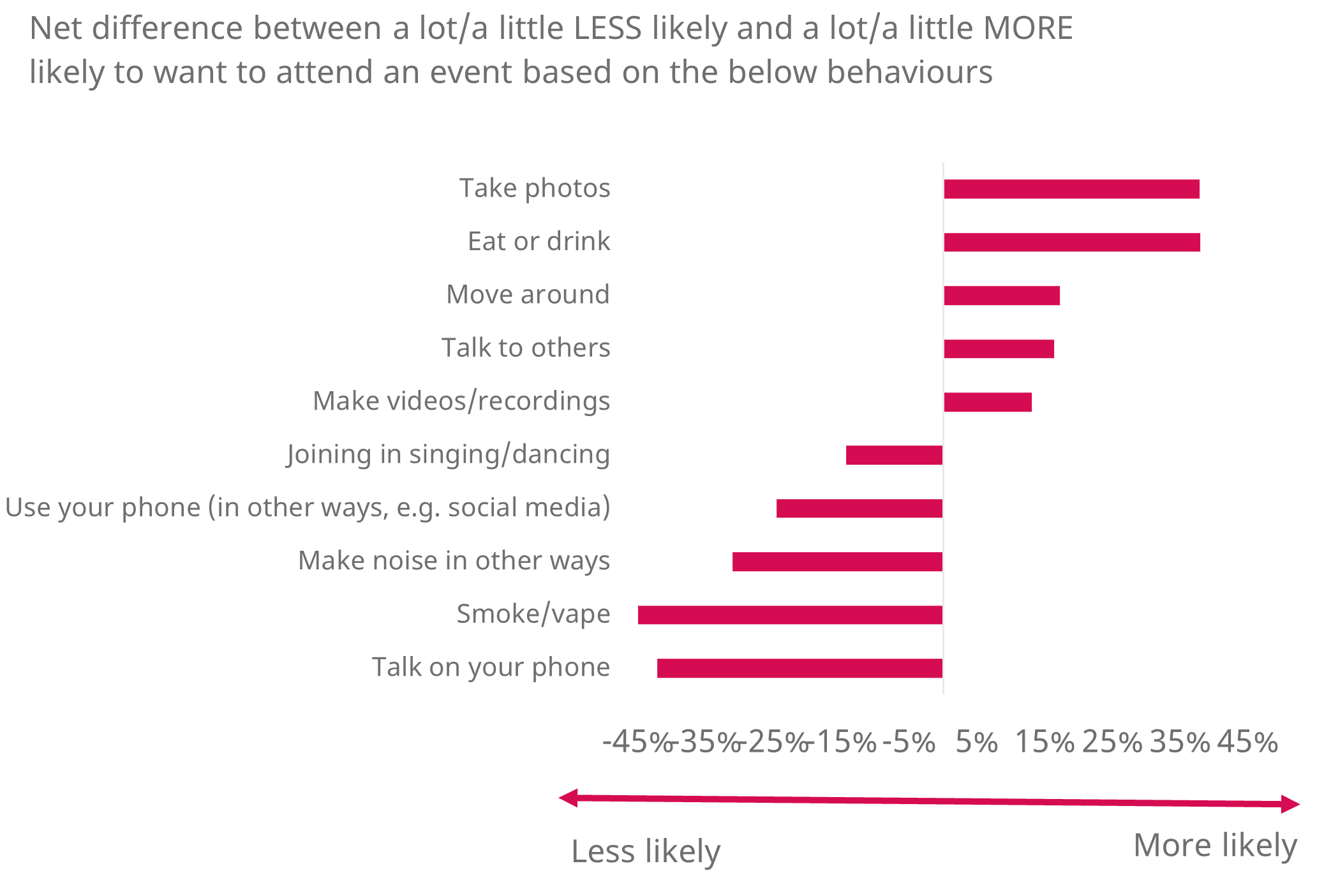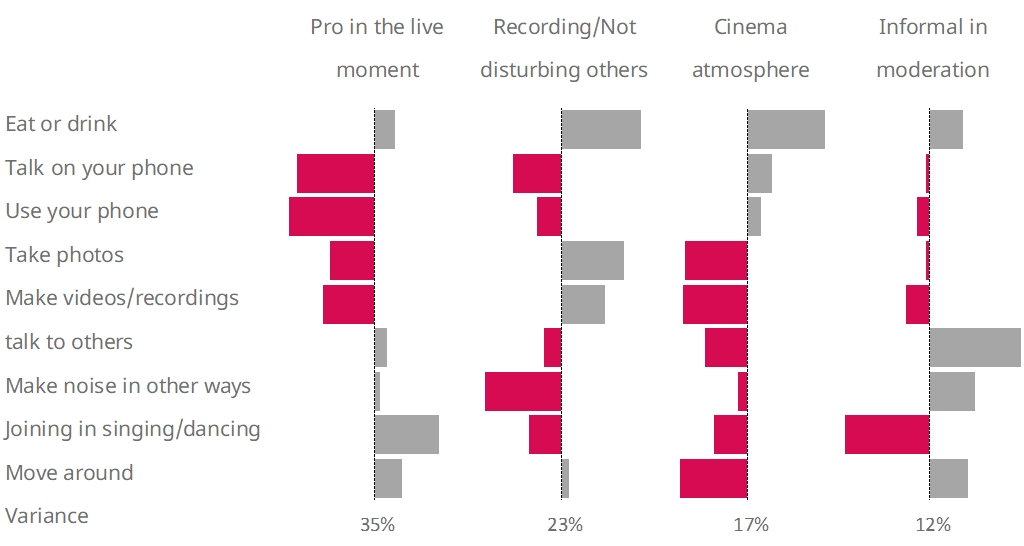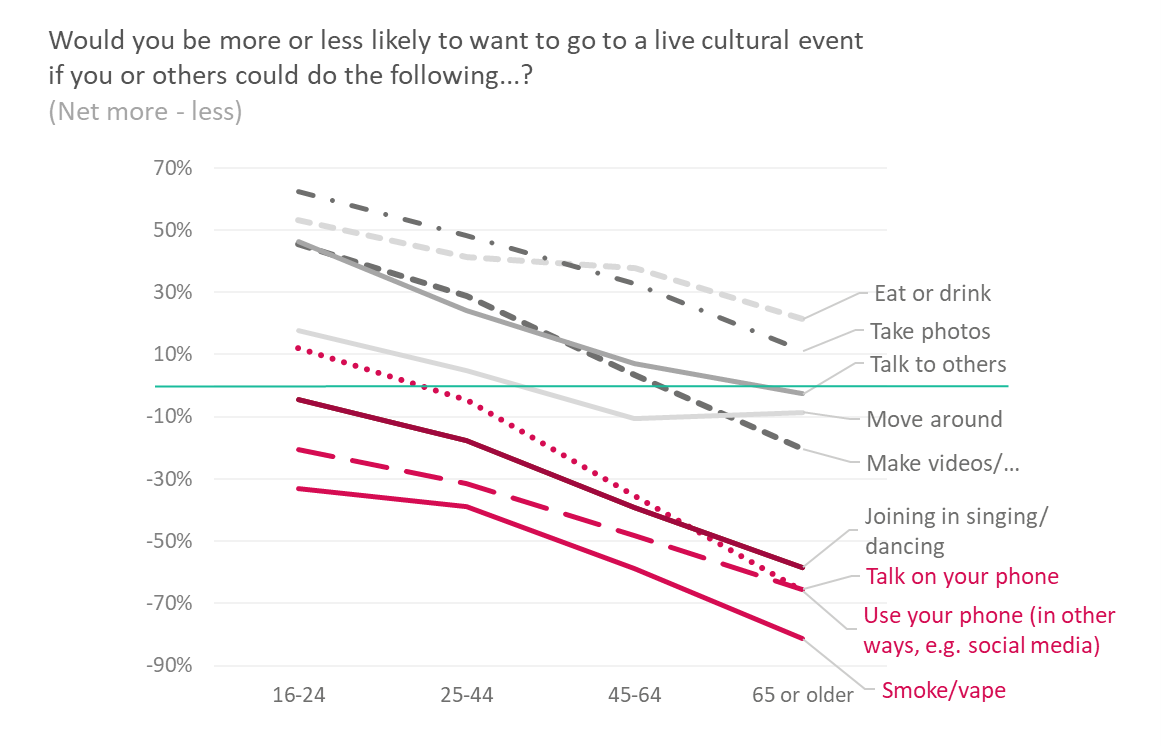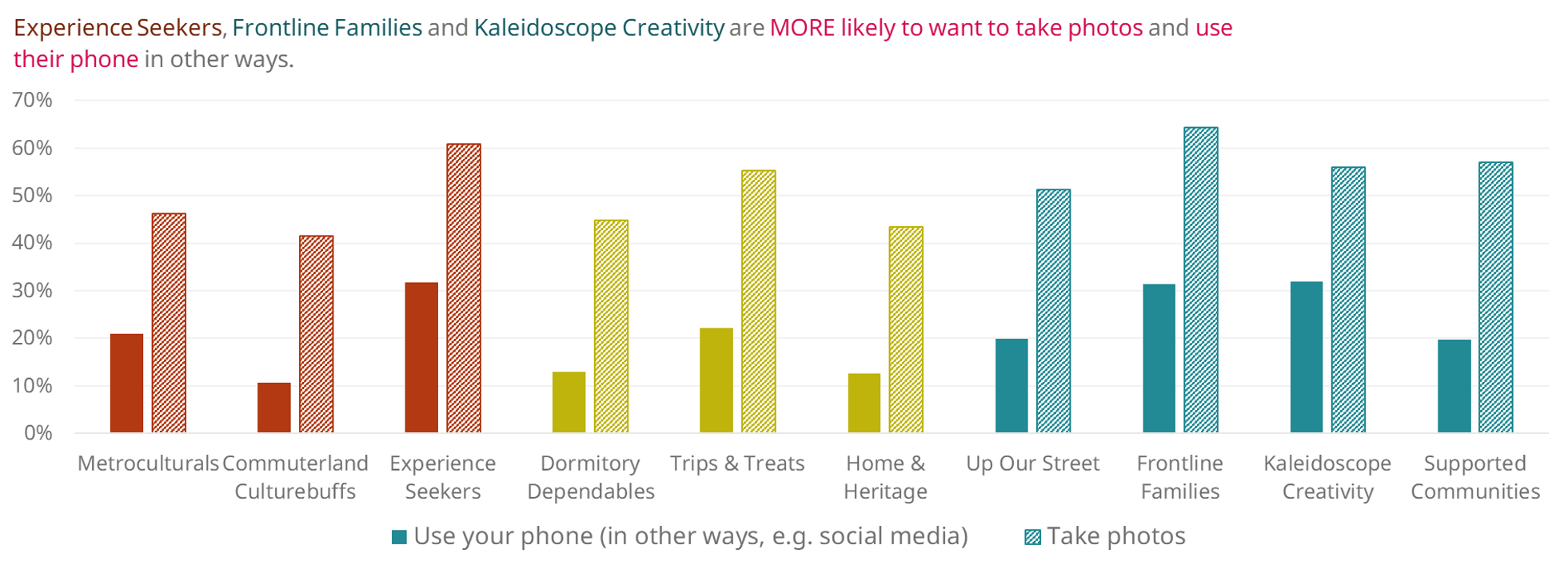Younger audiences prefer more relaxed behavioural codes
November 2023
This research is from The Audience Agency's nationwide longitudinal (ongoing) panel survey of changing views about participating in creative and cultural activities through the recent and ongoing crises, and beyond, the Cultural Participation Monitor.
Contents
Themes
Younger people are generally more tolerant of all divisive behaviours at live events, though some activities are universally off-putting (smoking/vaping, talking on the phone), while being 'allowed' to do others (eating, drinking, taking photos) actually makes people of all ages keener to attend.
Overall Attitudes
When asked if they are less likely to go to a live cultural event depending on the types of behaviours that they and other people are encouraged to do there, younger people are generally more tolerant of all divisive practices.

- That said, some activities are universally off-putting (smoking, talking on the phone, and singing/dancing along),
- While others (eating, drinking, and taking photos) actually make people of all ages and Audience Spectrum groups keener to attend.
- Although general phone use bothers most people, cameras are the exception, with 52% saying that they'd actually be more likely to attend an event if they are allowed to take photos.
Dos and Don'ts
Overall then, behaviours can be split into two groups - those that people want themselves and others to be able to do, and those that they don't:
Permitted activities that make people MORE LIKELY to want to attend, in order of how much they appeal:
Taking photos
Eating or drinking
Moving around
Talking to others
Making videos or recordings
Permitted activities that make people LESS LIKELY to want to attend, in order of how off-putting they are:
Smoking or vaping
Talking on the phone
Making noise in other ways
Using phones (e.g. social media)
Joining in with singing or dancing
By sorting these behaviours into groups expressing similar broad sentiments, we see four core cohorts of audiences' behavioural preferences emerge. And the picture becomes a little bit more complicated:

- The largest group accounts for over a third (35%) of respondents who express an overall preference for a more 'in the moment' experience, and most strongly reject phone usage in all its forms.
- A further near quarter (23%) are perfectly comfortable with people privately snacking and taking photos/recordings, so long as they are not doing it in a way that is loud or otherwise disruptive to others.
- A smaller group (17%) leans towards a more relaxed kind of 'cinema atmosphere', while the smallest of the 4 identifiable cohorts (12%) prefers a generally more informal experience, where you are free to chat with your fellows about what you're seeing and sing-along with the show.
Differences by Age Group
Tolerance of all of these activities decreases with age, with younger audiences holding far more positive attitudes towards relaxing behavioural codes.

- Whether you can eat or drink during a performance has a particularly significant influence on whether Gen Z (16-24) audiences want to attend, with 69% saying that it would make them actively more likely to come.
- This declines fast though, even amongst Millenials (25-44) with young families, only 37% of whom say that the ability to eat or drink during the entertainment makes any difference to whether or not they'd go to an event.
- Much younger audiences' preferences for more relaxed behavioural regulations when it comes to how they can consume live culture, raises interesting questions about the increasingly different experiential tastes and expectations that venues may need to be prepared to cater to in the not so distant future.
Looking at this through the lens of Audience Spectrum, we again see that certain youth and family dominated groups - Experience Seekers, Frontline Families and Kaleidoscope Creativity - are the most likely to want to be able to use their phones in a variety of ways during a live performance - beyond taking pictures:

Related videos
TEA Break | Following Arts and Cultural Organisations on Social Media
Watch nowCultural Participation Monitor | Latest Findings on Audience Attitude and Behaviours | Wave 9
Watch nowOther findings from Wave 9 | Jul 2023 | Live/digital, social values. audience behaviour
-
Cost of Living
It’s no surprise that the UK population feel worse off than they did last year (33% feeling worse off, 49% about the same and only 18% better off, a net 15% reduction).
-
Audiences prefer live events to digital
This report uses data from wave 9 of the Cultural Participation Monitor (CPM) to understand the extent audiences engage with live versus digital events, finding that:
- All audiences prefer live events, followed by at home viewing and then watching at a cinema screening.
- Lower engaged segments are more open to viewing at home and at the cinema compared to higher engaged segments.
- Younger people are more open to all viewing platforms and artforms compared to audiences aged 45 and over
-
Audiences prefer live events, but how much varies by artform
Data from the CPM suggests that the more popular an artform is the more open audiences are to viewing it in different formats other than live. This report presents insights into how the popularity of an artform and the initial audience interest can determine how engaging people find non-live events for a particular artform.
